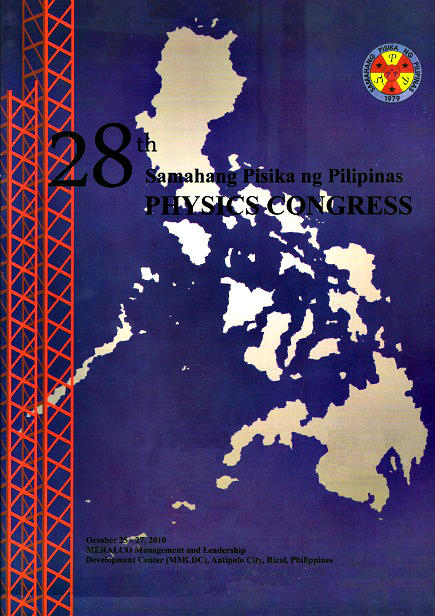Effect of varying DC oxidation environment in zinc oxide nanostructure morphology
Abstract
Particle size and structure morphology play an essential role in device fabrication. In this study, the morphological effect of varying the oxidation environment in the formation of ZnO nanostructures is investigated. The synthesis method used is resistive heating through direct-current non-catalytic oxidation of zinc metal. It is shown that when oxidized in ambient air, aligned nanobeads were observed while when oxidized in water, dispersed nanospheres are formed and for a hydrogen peroxide environment, shriveled structures resulted.
Downloads
Issue
Strengthening physics research and education for a brighter tomorrow
25-27 October 2010, MERALCO Management and Leadership Development Center, Antipolo City











